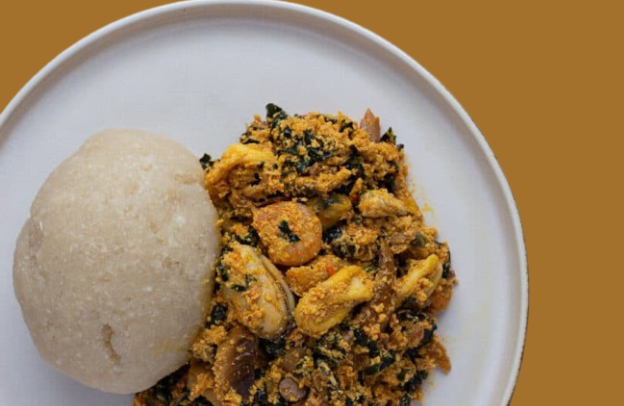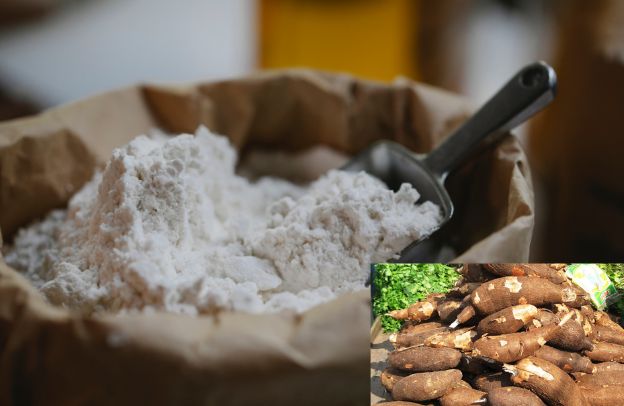How To Eat Garri: The Different Ways To Enjoy Garri, The Famous Nigerian And West African Delicacy

Garri is a staple food in Nigeria and across West Africa, beloved for its convenience, affordability, and long shelf life. Made from cassava, garri comes in white or yellow varieties, with palm oil giving it that golden color. Once just a side dish with soup, garri has evolved into both a meal and a snack. It’s rich in carbs, vitamins, iron, folate, and starch—making it both tasty and nutritious. Curious about new ways to enjoy garri? We’ve explored exciting snack ideas and can’t wait to share them with you!
Take your Business Storytelling to the next level through our Story To Asset Transformation Framework.
A while ago, I got a call from a friend, and we quickly fell into our usual chitchat routine. Our conversation was buzzing around her recent culinary adventures, and she excitedly mentioned trying something new: a dish she had heard about called garri. “The chef called it garri,” she said, “What is it? Is it sweet?”
I couldn’t help but laugh. Sweet? Well, garri is many things, but sweet isn’t quite how I would describe it. “Garri is a savory delight made from cassava,” I explained, “and it’s actually a bit of an obsession for a lot of people.”
See also Cassava Starch: A Golden Opportunity for African Entrepreneurs in the Global Agribusiness Landscape
Her curiosity was piqued, and as we dove deeper into the conversation, it became clear that I had to share the magic of garri with the world. There are so many ways to enjoy it, and most people, even if they’ve heard of it, don’t fully understand just how versatile and comforting this humble dish can be.
So, if you’re like my friend, hearing about garri for the first time and wondering, what’s the hype all about?, let me take you on a journey to discover this African staple. Trust me, by the end, you’ll be itching to try it yourself.
What Is Garri?
Garri ‘gah-ree’ of ‘Garri’ is a popular stable consumed mostly in West Africa but in different ways. It’s among the root tuber crops grown in different parts of Nigeria, Ghana, and Togo to outline a few. As I already mentioned, garri is consumed in different ways like soaked garri, Eba which is paired with different mouthwatering soups, kpomo-rich egusi, ogbono soup, or even vegetable soup.
In Nigeria, as a whole garri is a constant stable found in different homes because of its flexibility.
Garri is derived from granulated cassava that has undergone various production processes such as harvesting the cassava itself, peeling off the mud backs, fermenting, and stacking in a sack bag for a maximum of four days (the reason is to clench the moisture off it), sieving and roasting (which happens to be the final stage of the processing).
Consequent to the bone-breaking phase people pass through while trying to filter the cassava into something edible, most people shy away from it, making garri one of the hardest staples to be processed.
In spite of all the daunting processes of molding garri into fine grain, it’s one of the cheapest staples in Nigeria.
You might also want to see Nigerian Cassava Production: How to Transform a Staple Crop into Africa’s Economic Powerhouse
A number of times, some people regard it as a poor man’s food, but the truth is, garri satisfies both poor and rich people.
Some say that Cassava was introduced to West Africa from Brazil by Portuguese merchants in the 16th century. Some other sources say the mass return of enslaved Africans from the New World (America) led to the introduction of this wonderful staple in West Africa. Cassava itself was found in parts of the New World but the repatriated Africans who returned with the crops introduced the indigenes to how to process Cassava into various types of staples.
For the record, garri is not the only food derived from Cassava, Fufu is equally gotten from the crop.
Since its introduction till now, garri has become every Nigerian home’s companion.
Types Of Garri And How To Enjoy Them
Different types of garri are processed according to preferences and tastes. Each region in Nigeria, for example, has a special way they enjoy their garri. The color and taste vary, but the bottom line is that the end product of all the processes will be garri, if the person wants it.
Now, here are the most popular types of garri you will easily come across in the market.
Yellow garri
The name is coined from the garri, which is yellow. During the process of making this particular type of garri, a particular amount of palm oil will be drizzled into the garri while stirring and roasting the fine grains on fire.
With time and unrelentless stirring of the heated grains, the oil will pervade the whole frying pan, meshing with the fine, white grains, apparently transforming it into a yellow color.
The reason for adding the palm oil, of course, is to make it thicker (especially when done with hot water) and starchier. This type of garri (when made with hot water) is referred to as eba and paired with different varieties of soup such as Egusi, Okra, Bitterleaf soup, and more.
White Garri
Unlike the yellow garri, nothing is added to it when roasting. It undergoes the usual processes of production and it’s the most common type of garri you will see in the food shop.
It can be soaked or downed with soup in the form of (swallow).
Ijebu Garri
This type is usually found in the Western parts of Nigeria, in Ijebu. It’s subjected to the same procedures as the others, but the only difference is that it has more fine granules, drier and pleasantly sour when it’s guzzled as a snack.
Common Ways To Eat Your Garri
Garri is a versatile dish that can be enjoyed in many ways, making it a staple in West African cuisine. One common way is by mixing it with cold water, sugar, and milk to create a refreshing and sweet snack. Now, below are common ways to enjoy your garri:
1. Soaked Garri
I wouldn’t fail to list this as the first way to eat garri. Do you know why? It’s because it’s more common among Nigerian students.
See also Cassava Farming: A Gateway to Profitable Agribusiness for the African Diaspora
Soaked garri serves as a makeshift brunch or lunch before actual food is prepared.
You rarely come by students who don’t have a cup of garri because they love how easygoing it is rather than the stress of bustling around in the kitchen in an attempt to cook rice or soup and quench their grumbling stomachs.
To savor the sweetness of this soaked garri, you need to have chilled water. Cold water bears the taste of all the supplements that you will add to the garri.
You also need to have cubes of sugar, groundnut seed, Kuli-kuli (German stone as it’s mostly called, and it’s gotten from processing raw groundnuts or peanuts), powdered milk, or condensed milk.
You pour the items into a bowl and stir them together before drizzling the right amount of chilled water that will bear the taste of the garri.
Note: Ijebu garri is mostly taken as a soaked garri because of its crispiness and mildly sour taste.
2. Garri And Soup
Almost everyone enjoys taking their garri in this form. You will see it in most restaurants, both upscale and local restaurants. The garri is made with hot water and conscientiously stirred until it becomes viscous, making it easy for people to mold in circles, dip into their soup, and eat with ease.
It can be paired with various types of soup, my favorite being Egusi.
It’s also served on occasions, and at parties (Owambe) in the Yoruba language. When you eat this type of garri, you will feel fulfilled.
3. Garri Salad
You can also eat your garri in this form, but it’s more common in Ghana and Cameroon. It offers a relishing taste and crunchiness that will water your mouth for more.
This garri salad is basically prepared with onions, vegetable oil, cucumber, ground crayfish, Maggi, salt, pepper, etc, and the dried garri gets mixed with the aforementioned ingredients before its tastiness dredges up.
4. Garri And Beans
This is yet another prevalent way of eating garri among students and Nigerians as a whole.
You enjoy this garri with carefully cooked beans. When you are done plating your beans, you soak your garri, only this time you soak it with sugar and milk. Some do take theirs without adding milk.
You might also like Processing and Marketing of Selected Cassava Products in South-east Nigeria
Then you scoop your beans and soak garri together before welcoming it into your mouth.
5. Garri biscuit
Though not many people do this, which largely emanates from the time you are expected to expend in prepping it, it’s still very mouthwatering.
People dodge this type because they don’t have baking skills, but you sure can learn a thing or two from online classes these days.
This type of garri is prepped as though you’re baking a cake. It’s made with eggs, sugar, and just anything that you use when baking a cake.
And this type of garri can be munched on straight from the oven or enjoyed when dipped into your soup.
However, it’s mostly common among Ghanaians.
Conclusion on the Different Ways To Eat Garri And Enjoy It
Garri is one of the few staples that can be transformed from one dish to another yet it retains its tastiness. There’s no way garri will be prepared that’ll make you lose interest in eating it.
Are you still contemplating giving it a try? Quit the bubbling confusion in your head and grab a bite of garri staple.
Remember only a trial will convince you. If you are deliberating on ways to savor your garri, I believe this article has spilled a response to your unanswered questions.
Take your Business Storytelling to the next level through our Story To Asset Transformation Framework.






